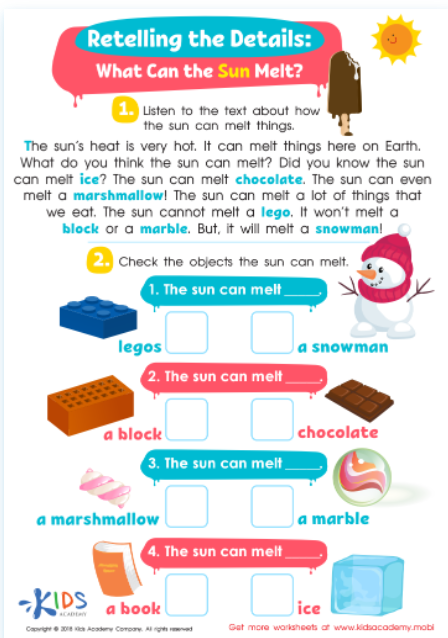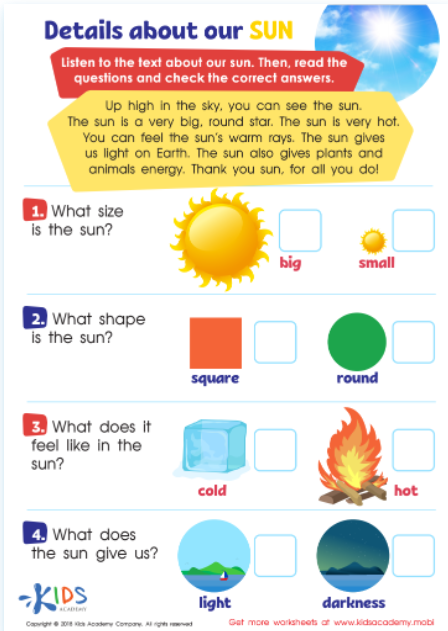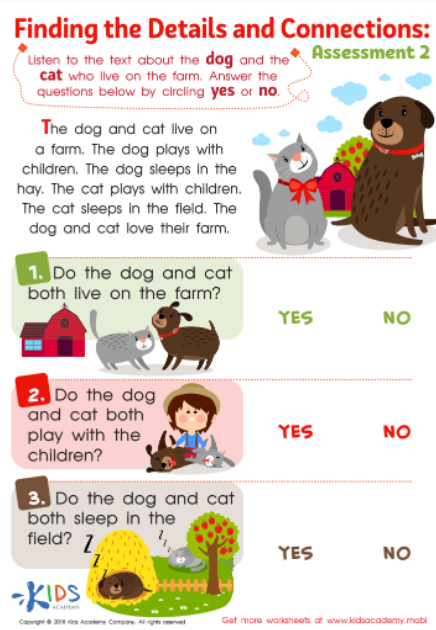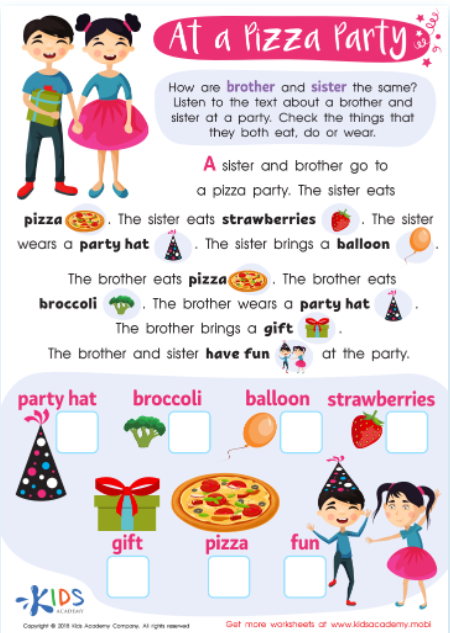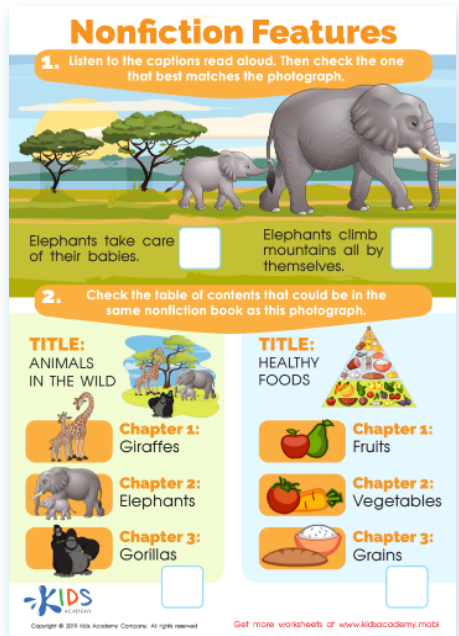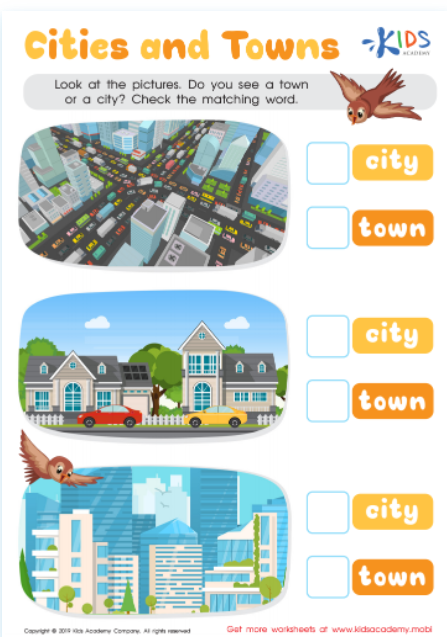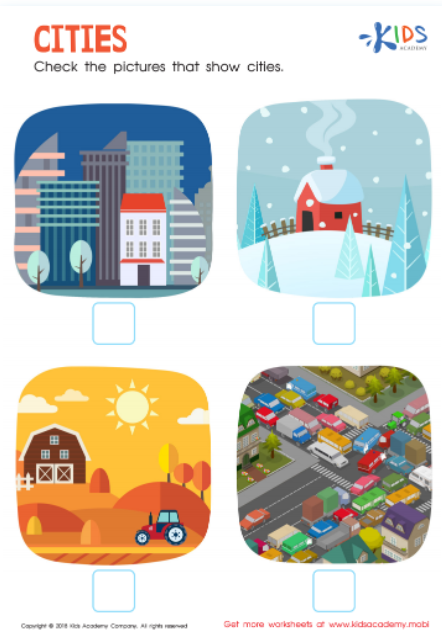-
English
-
English Pre-K
-
Unit 1: Early Literacy Skills
-
ABCs
- Pre-writing Activities
- Letter A
- Letter B
- Letter C
- Letter D
- Letter E
- Letter F
- Letter G
- Letter H
- Letter I
- Letter J
- Letter K
- Letter L
- Letter M
- Letter N
- Letter O
- Letter P
- Letter Q
- Letter R
- Letter S
- Letter T
- Letter U
- Letter V
- Letter W
- Letter X
- Letter Y
- Letter Z
-
Phonological Awareness
- Rhyming Words
- Letter Sounds B, C, D, and F
- Letter Sounds G, H, J, and K
- Letter Sounds L, M, N, and P
- Letter Sounds Q, R, S, and T
- Letter Sounds V, W, X, Y, and Z
- Letter Sounds A, E, and I
- Letter Sounds O and U
- Beginning Sounds
- Matching Letters to Sounds
-
ABCs
-
Unit 2: Vocabulary
-
Common Words
- Sorting Words into Categories
- Color Words
- Verbs and Adjectives
-
Sight Words
- Sight Words 'I' and 'Can'
- Sight Words 'You' and 'Like'
-
Common Words
-
Unit 3: Print Awareness
-
Parts of a Book
- Working with a Book
- Spaces Between Words
- Text and Illustrations
-
Picture Books and Poems
- Picture Book Text Features
- Poem Text Features
- Signs and Labels in the Community
-
Parts of a Book
-
Unit 4: Reading Literature
- Questions About Stories
- Discussing Stories
-
Unit 5: Reading Informational Texts
- Retelling Details in a Text
- Questions About a Text
- Connections Between Events
- Text Features
- Describing Illustrations
-
Unit 1: Early Literacy Skills
-
English Pre-K
-
Math
-
Math for Pre-Kindergarten
-
Logic and Geometry
-
Matching and Sorting
- Same and Different
- Which One Is a Little Different?
- Objects That Go Together
- Sorting by Color and Size
- Sorting The Same Group in Different Ways
- Patterns
-
Shapes
- Shapes in Our Environment
- Naming Shapes Regardless of Size
- Making Shapes in Preschool
- Comparing Shapes
- Relative Positions
- Sorting Shapes
-
Matching and Sorting
-
Early Number Sense
-
Numbers 1–5
- Counting to 3
- Counting to 5
- Arranging Objects up to 3 Objects
- Arranging up to 5 Objects
- Writing Numbers 1–5
-
Numbers 1–5
-
Numbers up to 10
- Counting to 10
- Arranging up to 10 Objects
- Number 0
- Writing Numbers 6–10
- Breaking Down Numbers 6-10
-
Logic and Geometry
-
Math for Pre-Kindergarten
Reading Informational Texts
Spark Your Youngster’s Curiosity by Reading Aloud
Are you searching for the perfect gift to give your budding learner? Don’t underestimate the power of one on one quality reading time. The benefits of this connection are undeniable. Start developing listening comprehension skills even before your children utter their first words. Perhaps you’re wondering why listening comprehension is so important? Let’s break it down.
Comprehension skills are an integral component of Pre-K curricula. Standards address literary and informational texts. At the earliest phases of learning, we expect students to ask and answer questions about a text, determine logical connections, and analyze craft and structure.
Now you need not fret. These words sound fancier than they are. Kids Academy has done the groundwork by creating engaging, research-based resources to address these areas. Keep reading to get a better understanding of the benchmark skills for Pre-K.

Pre-K Benchmarks for Nonfiction Reading Comprehension
At this age, your Pre-K student needs the text read aloud by an adult. Nonetheless, your young scholar has what it takes to make meaning of what you read. Nonfiction texts, sometimes referred to as expository texts, can be engaging. Subscriptions to magazines for kids, online articles, and library books about endless topics will work well for these benchmarks.
Teach Me How to Retell Important Information from the Text
After listening to a paragraph or entire nonfiction article, your child should be able to retell the most pertinent information. He should identify who or what the text discusses. Additionally, determining two or three details about the person or topic should also be recalled. Use the worksheet below to get started with this concept.
Teach Me How to Notice and Pick Out Important Facts
The purpose of reading is to make meaning. In some cases, young readers become word callers who merely read words without thinking of what they are reading. Stress the importance of understanding first, even before teaching your child how to read. Can your child note relevant facts about what you read? Consider using the worksheet below to fine-tune this skill.
Teach Me How to Answer Text-Dependent Questions
Schools require students to refer to the text for the basis of their answers. Text-dependent questions require attention to detail. Start using this strategy by asking who, what, when, and where questions. The worksheet below is a great start for this skill set.
Teach Me How to Recognize Logical Connections
Authors use logical connections to structure texts for readers to understand. The logical connections you want to practice with your young reader include chronological order, compare and contrast, cause and effect, and problem and solution. Introduce these patterns with concrete items first. For example, show your toddler an apple and an orange and have them compare and contrast the fruits. Follow up with this fun worksheet.
What Pre-K Students Need to Know About Text Structure
Literacy involves so much more than being able to read the words on a page. Written language has varying structures, systems, and rules that need development. Concepts of print need explicit teaching as your youngster is learning how to write.
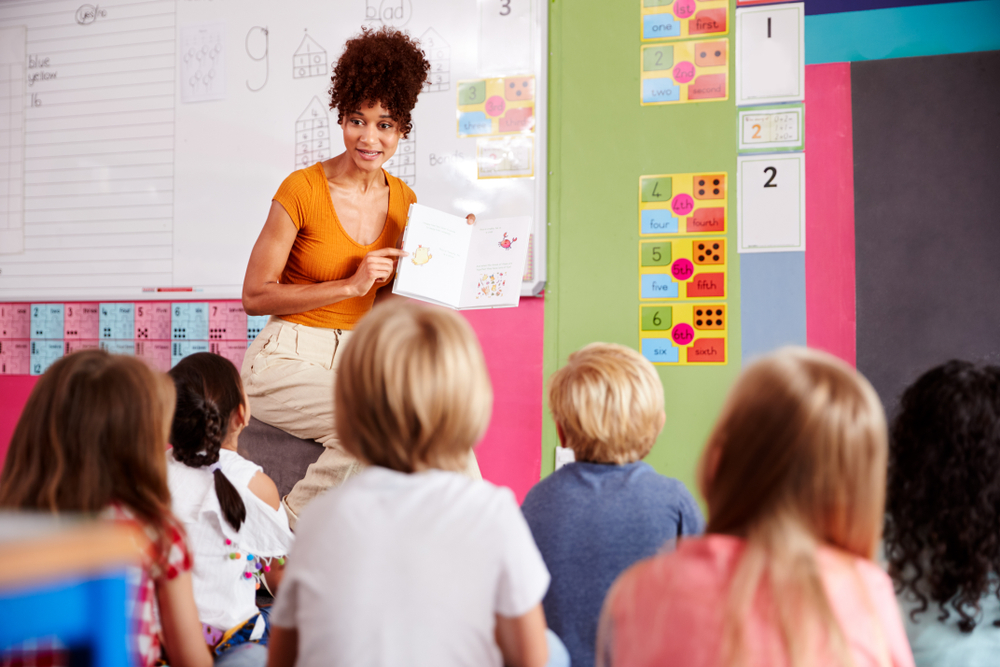
Analyzing Text Structure
Your student needs to understand how we string words together to write a story. The difference between a word, a sentence, a paragraph, and a page all need teaching. What is punctuation and how do we use it? There is so much to learn. Create a routine by discussing these concepts with each text. The worksheet below is great for practicing the structure of nonfiction texts.
Drawing Information from Illustrations
Nonfiction texts feature vivid photographs that are just as important to analyze as the text. Sometimes, information is included solely in the illustrations, rather than the text. Our young readers must gather information from photographs and illustrations.

Finding Similarities and Differences Between Two Texts
A more advanced skill set is to compare two texts of a similar topic. Let’s say your child is learning all about cities vs towns. Find multiple texts about this topic and note information that you learn from each book. What ideas are the same? Are there some differences?
Kids Academy has some helpful resources for this skill:
These three worksheets show this concept in practice.
Make time to pull out some magazines and read to your child. The benefits of listening comprehension will impact many facets of your youngster’s early reading skills. Use the resources from Kids Academy as a springboard to get going on the right path.
By: Monica Edwards
English Language Arts Teacher and Curriculum Writer
